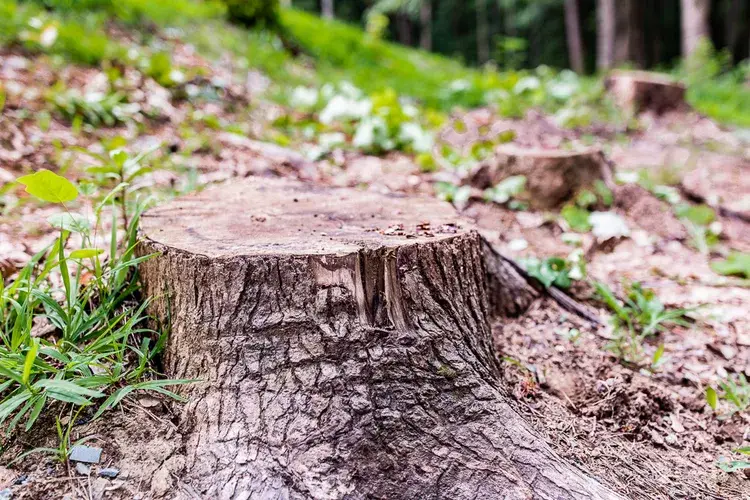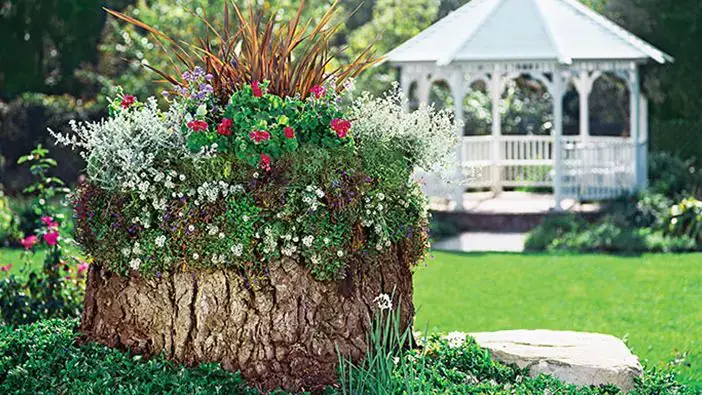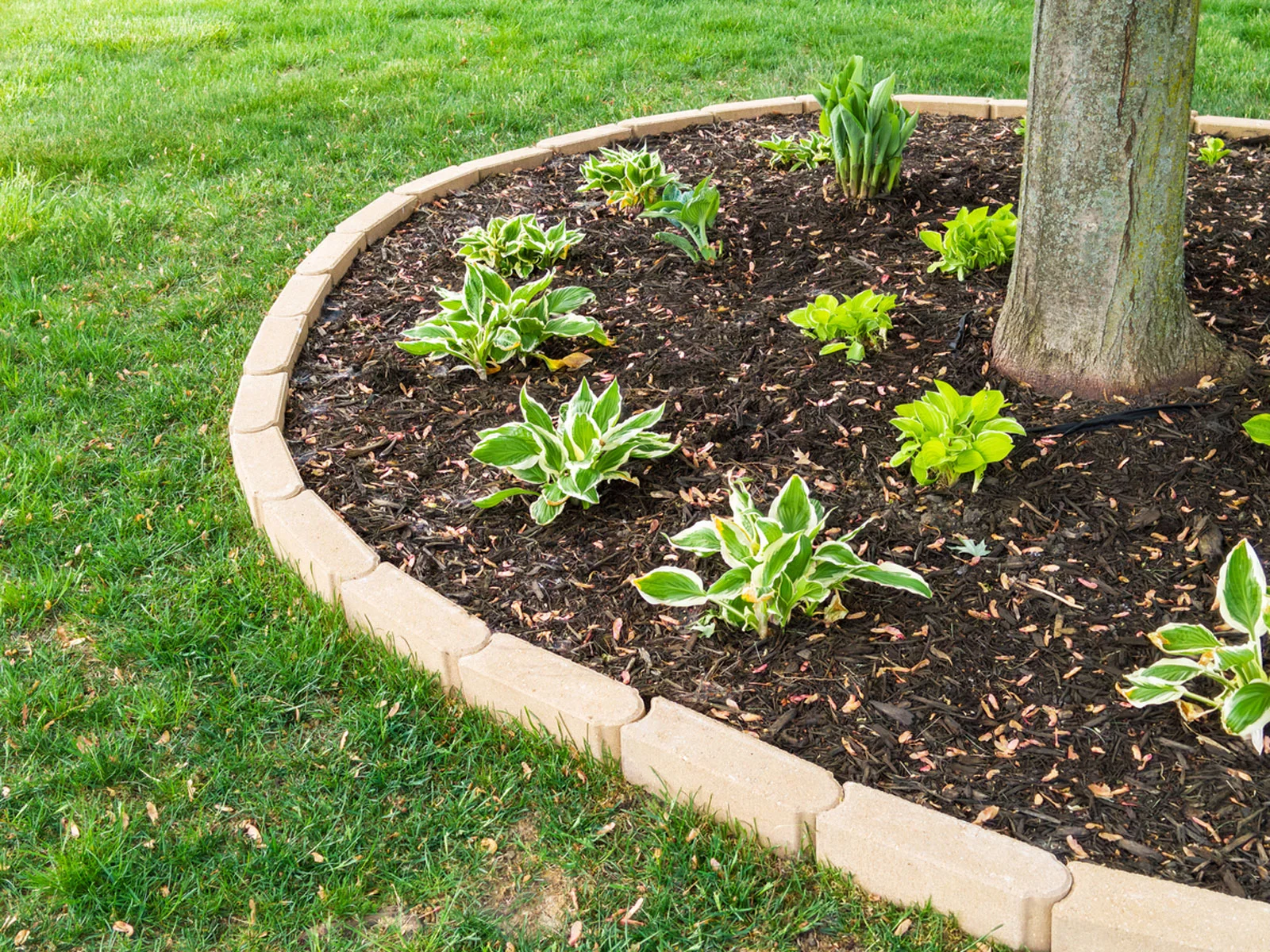You are a newbie at gardening and planning to make a raised bed over a tree stump. However, you don’t know how to do it and are in the dark about the whole situation.
So, you’re wondering how to make raised bed over tree stump?
You can make raised bed over a tree stump if it’s reliable and the existing tree stump is good enough. To remove the stump, all you need to do is cut it as close to the ground as possible. Then, create a frame with wood planks. After that prepare organic soil and apply a generous layer of that. Before planting, allow 2 weeks of rest time to settle the raised bed.
If you had to remove a tree, there will be an empty space in the ground that needs to be filled with something.
Continue with the article to know the process of making a raised bed over a tree stump. Also, this article incorporates a proper maintenance guide as well.
Can I Make a Raised Bed Over Tree Stump
Yes, you can make a raised bed over a tree stump. Because the raised bed is constructed around an old tree stump, utilizing its decaying wood as a sustainable source of water and nutrients for the plants.
The roots and stump act as a natural sponge, retaining rainwater and surface run-off during wet periods and releasing the stored water to the plants during dry periods.
Also, the deep root system acts as a spongy wick, drawing up groundwater to the surface for the flower bed to use. The decaying wood inside the bed serves as a natural compost, providing long-term nutrients to the plants.
As the stump and root system decompose over time, air pockets are created, aerating the soil naturally. This approach provides a self-sustaining and long-lasting solution for the flower bed.
But if the existing tree is not good enough or poisonous, you should find an alternative location for your garden. You should note that even resistant plants can be affected by juglone to some extent, which may impact your plant’s health and production because the toxicity of the existing plant is able to destroy the new one.
So, if you’re running out of a feasible location, you can build a bed over a tree stump. Before you go to make a bed, you must consider some factors.
Things You Need to Consider before
It is possible to build a raised bed over a tree stump, but there are a few things to consider before doing so. Let’s look at the factors you need to consider.
Condition of the Stump:
Firstly, if the tree stump is still alive and has roots that are actively growing, they may continue to grow and interfere with the raised bed. In this case, it may be better to remove the tree stump before building the raised bed.
If the stump is dead and has been properly treated to prevent any regrowth, then it can serve as a solid base for the raised bed. However, the stump will still take up space in the raised bed, reducing the amount of usable soil.

Reliability:
The tree stump must be large and stable so that your raised bed will be stable. Raised beds can be supported by stumps that are large and stable, which may be able to support soil and plants.
Nevertheless, a rotting or unstable stump could make your raised bed collapse if it cannot support the weight.
Quality of Soil:
Since tree stumps take a long time to decompose, the soil beneath the raised bed may not be ideal for growing plants. Besides the roots of the tree, you may also have to contend with the roots of your plants for nutrients and water. These constituents are also very important factors for plumeria stem wrinkled.
Nutrients Factor:
The decomposing wood within the bed should serve as a valuable resource by gradually releasing nutrients to nourish the plants and retaining excess water for use during dry periods.
This should reduce or eliminate the need for fertilizers and irrigation, making it an efficient and sustainable gardening practice. So, choose a tree that is not toxic and able to provide enough nutrients.
Water Drainage:
You have to ensure enough drainage system. Water could accumulate and cause root rot if the stump is blocking drainage. It is also necessary for saga leaves curling.
How to Make a Raised Bed over Tree Stump
It is possible to construct raised beds at any point in the year, and many gardeners prefer to build them during the winter season. This ensures that the garden is fully prepared for new planting when spring arrives.
Here is a step-by-step guide on how to raise a bed over a tree stump if you don’t know how.
Required Tools:
These are essential materials you need to perform the job.
- Chainsaw
- Good soil
- Water
Procedures:
Make sure you follow the steps below to get the job done right.
Step 1: Cutting And Cleaning
First, cut the stump as close to the ground as much as possible with the chainsaw. High stump won’t be able to make the garden properly. You can remove the large roots that are sticking out of the ground.

Nevertheless, you can’t remove all of them. But the big and large ones can be removed easily. Then, clean the debris around the tree stump properly.
Step 2: Adding Frame
At this point, create a frame for the raised bed using materials such as wood planks or stones. Your frame should be high enough to cover the tree stump and deep enough to allow for good root growth.
Step 3: Adding Drainage
Now it’s time to add drainage to the stump. It will help your plants to thrive and avoid waterlogged soil issues. To make a proper drainage system, you need to consider the following issues.
- Be sure to evenly space the drainage holes in the bottom of the raised bed frame.
- Then, cover the drainage holes with coarse gravel or small stones. By adding this layer, the drainage holes will be less likely to become clogged with soil.
Step 4: Preparing And Adding Soil
For adding soil, you have to choose good soil that comes with organic matter such as compost and topsoil. Then, lay down a generous layer of this soil. You can then top this with soil from another part of your garden, or a mixture of your soil and high-quality bagged compost from a garden center.
Step 6: Allowing to Settle
You need to allow at least two weeks for settling down the build bed before starting planting. If you have constructed it during the winter months, you must cover it with plastic sheeting to safeguard it from ice or very cold temperature.
Step 5: Planting And Watering
Now after two weeks, you can plant your desired crops or flowers directly in the soil. While planting you need to make sure that larger plants will have enough space to grow by digging a wider hole and backfilling it with compost before planting directly into the manure layer.

Finally, you can mulch the top layer of the soil with more manure, if available, to help retain moisture and provide ongoing nutrients to your plants.
Maintenance Guides for Raised Beds
Additional maintenance is required for raised beds compared to ground-level beds. However, it’s important to keep an eye out for a few things to avoid unnecessary hassle.
- Since raised beds have superior drainage systems, they can become dehydrated more than other parts of your garden during hot and arid conditions. So, it’s recommended to utilize water from your water butt to maintain adequate moisture levels in the soil.
- You should refrain from walking on the soil of your raised garden bed as much as possible. Because it can compact and can result in damaging your plants.
- Then, you need to mulch the sump on which you’re raising the bed which will help you to enrich your soil. Also, keep in mind that the raised bed will continue to settle over time, so you may need to add extra soil periodically, perhaps once a year.
- As the soil settles and depletes, it may gradually become barren. Before planting, add 1-2 inches of compost or composted manure each spring to combat this.
- You should loosen up the compact soil during the off-season with a garden fork. Then gently wiggle it back and forth as you insert it into the soil. To loosen the soil without exerting too much effort, repeat this process at intervals of 8- to 12-inches all over the bed.
- Please feed your soil with ample amounts of compost and aged manure. You can add organic granular fertilizer when planting. For vegetables like tomatoes and peppers, you should provide monthly doses of liquid kelp or fish emulsion.
Frequently Asked Questions (FAQs):
What Are The Advantages Of Raised Beds Over Tree Stumps?
The advantages of raised beds are they can increase soil temperature and prevent soil compaction and pathways from forming. Then, during extreme weather or heavy rain, the barriers prevent soil erosion and washing away. It is a sustainable option to reuse tree stumps as planters since they can otherwise be discarded.
What Is The Disadvantage Of Raised Beds?
The primary disadvantage of raised beds is that they can initially be more expensive than growing vegetables directly in the ground. If the tree stump is poisonous it can destroy your plant other than growing them.
Will A Tree Grow Back If I Cover The Stump?
No, if you cover the stump it won’t grow back. But if you left it uncovered it can grow back. Stump grinding reduces the risk of regrowth, but the roots remain in place and may generate sprouts that could eventually develop into a new tree.
Conclusion
Hopefully, you have figured out all your queries regarding raised bed over a tree stump. Raised garden beds offer an excellent opportunity to cultivate fruits, vegetables, or flowers and introduce fresh designs to your garden.
Remember to take proper care and maintenance of raised beds if you’re planning to build them.
Happy gardening!
- Why Are There Still No Tomatoes in My Tomato Plants? Let’s Fix the Issue! - July 13, 2023
- Water Propagation White Stuff on Roots: Everything You Should Know! - July 11, 2023
- String of Dolphins Drying Up: Solved! - July 11, 2023
